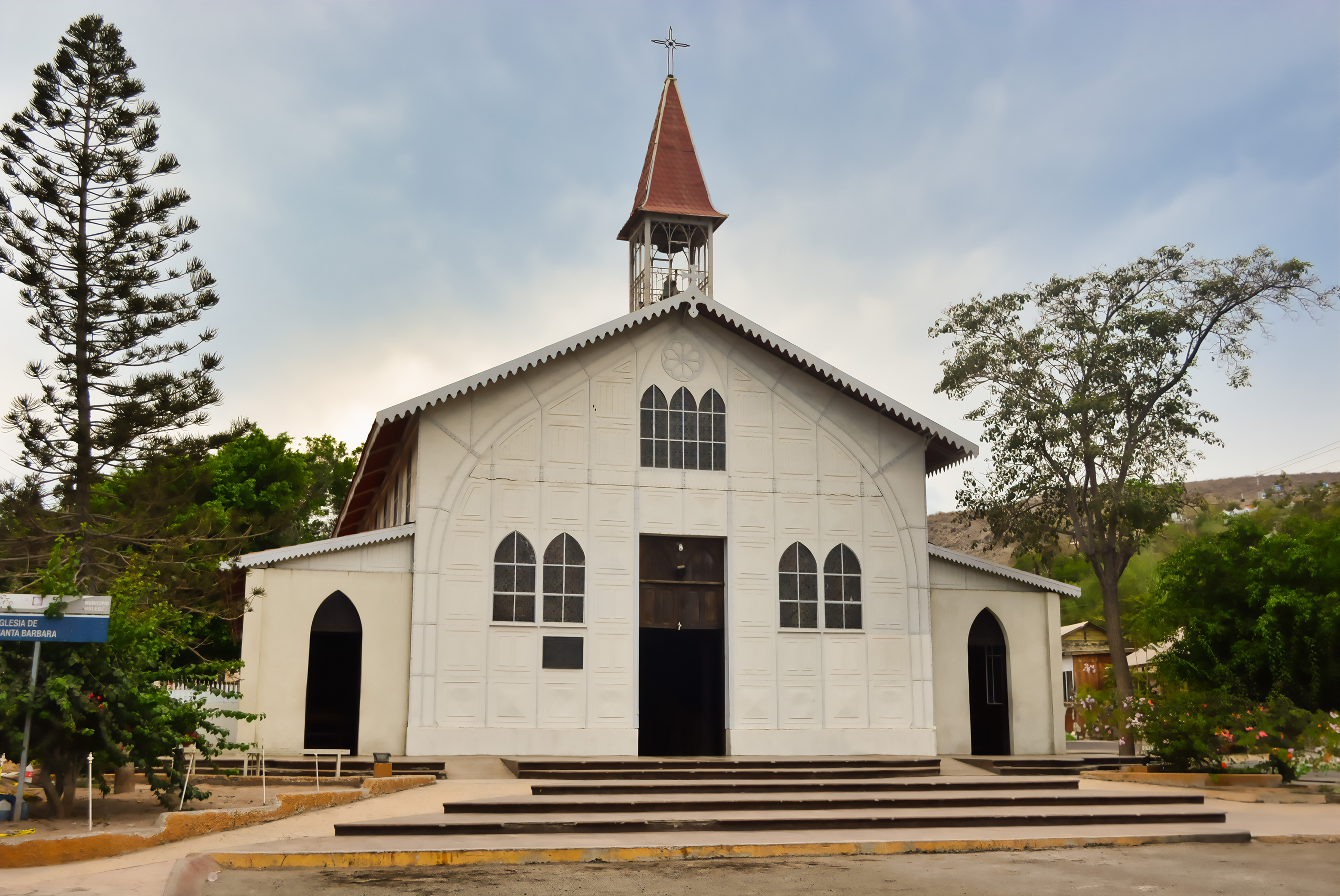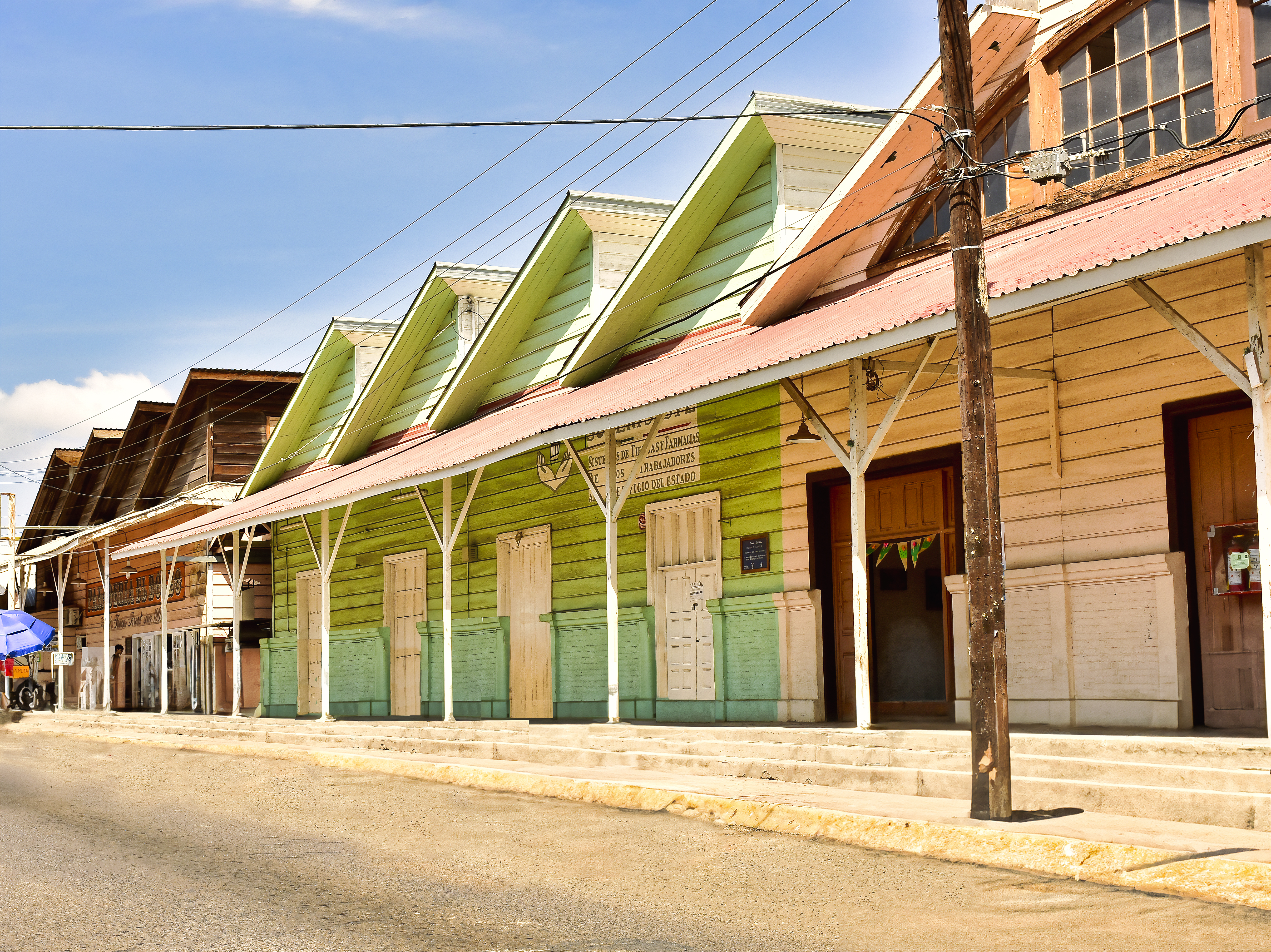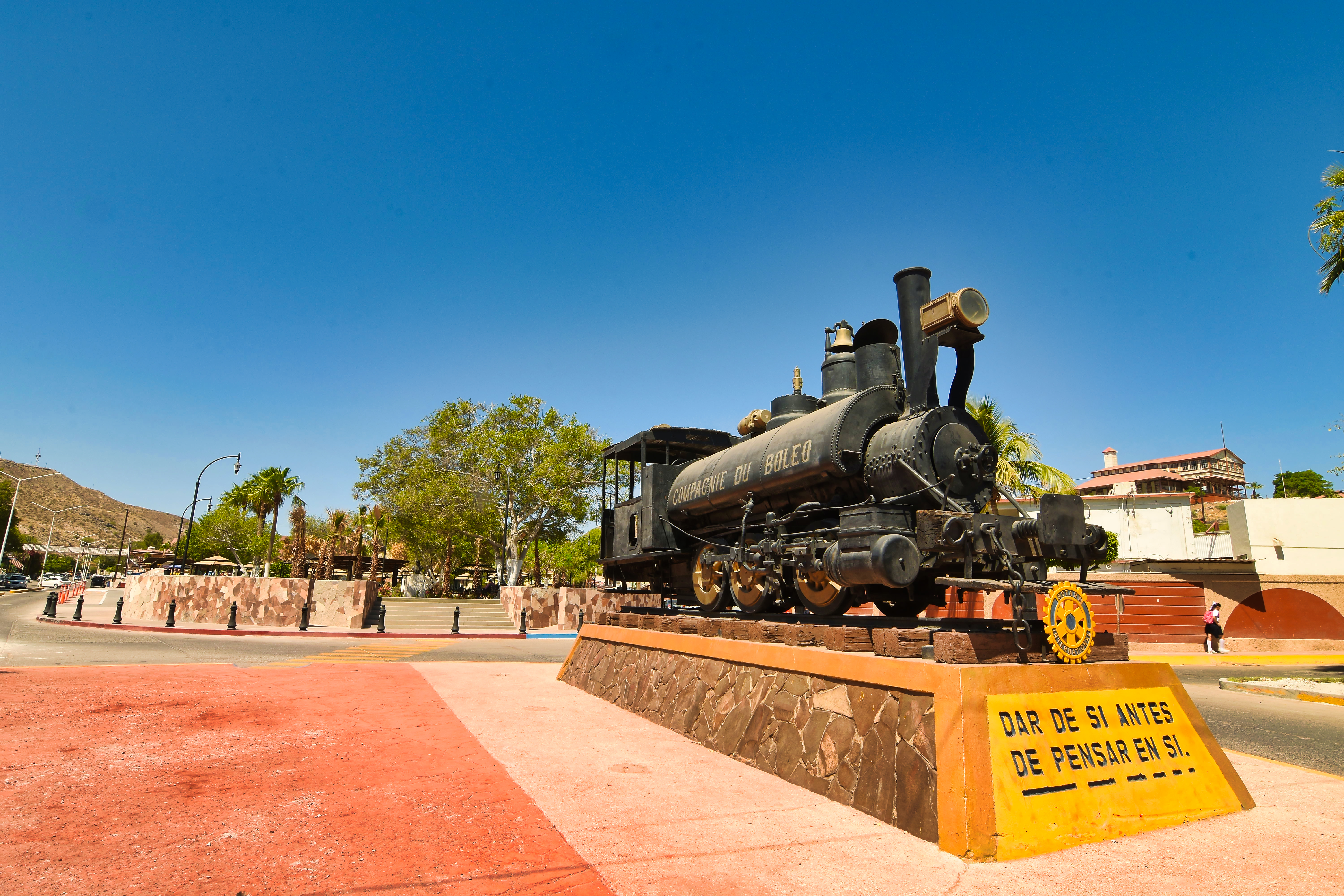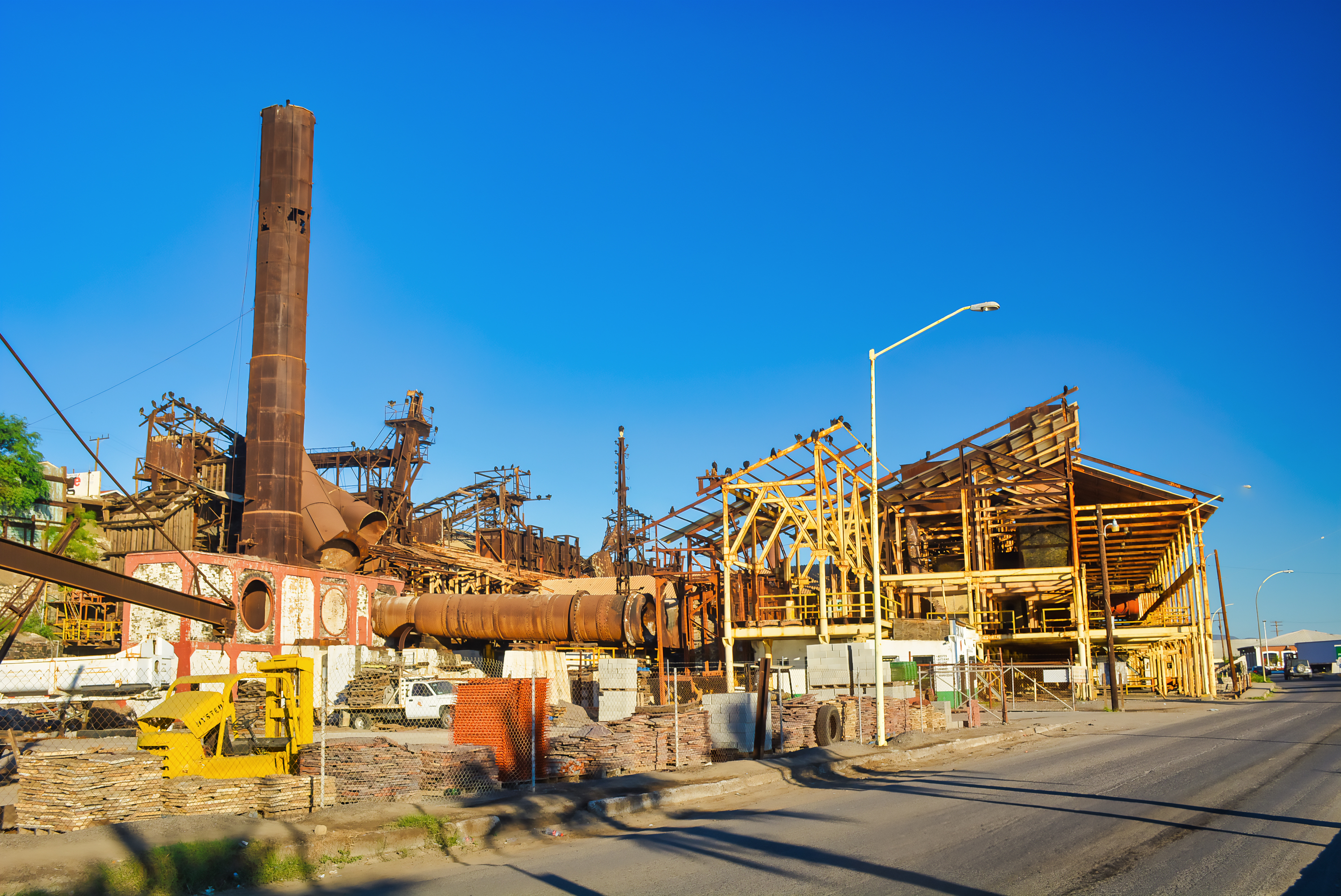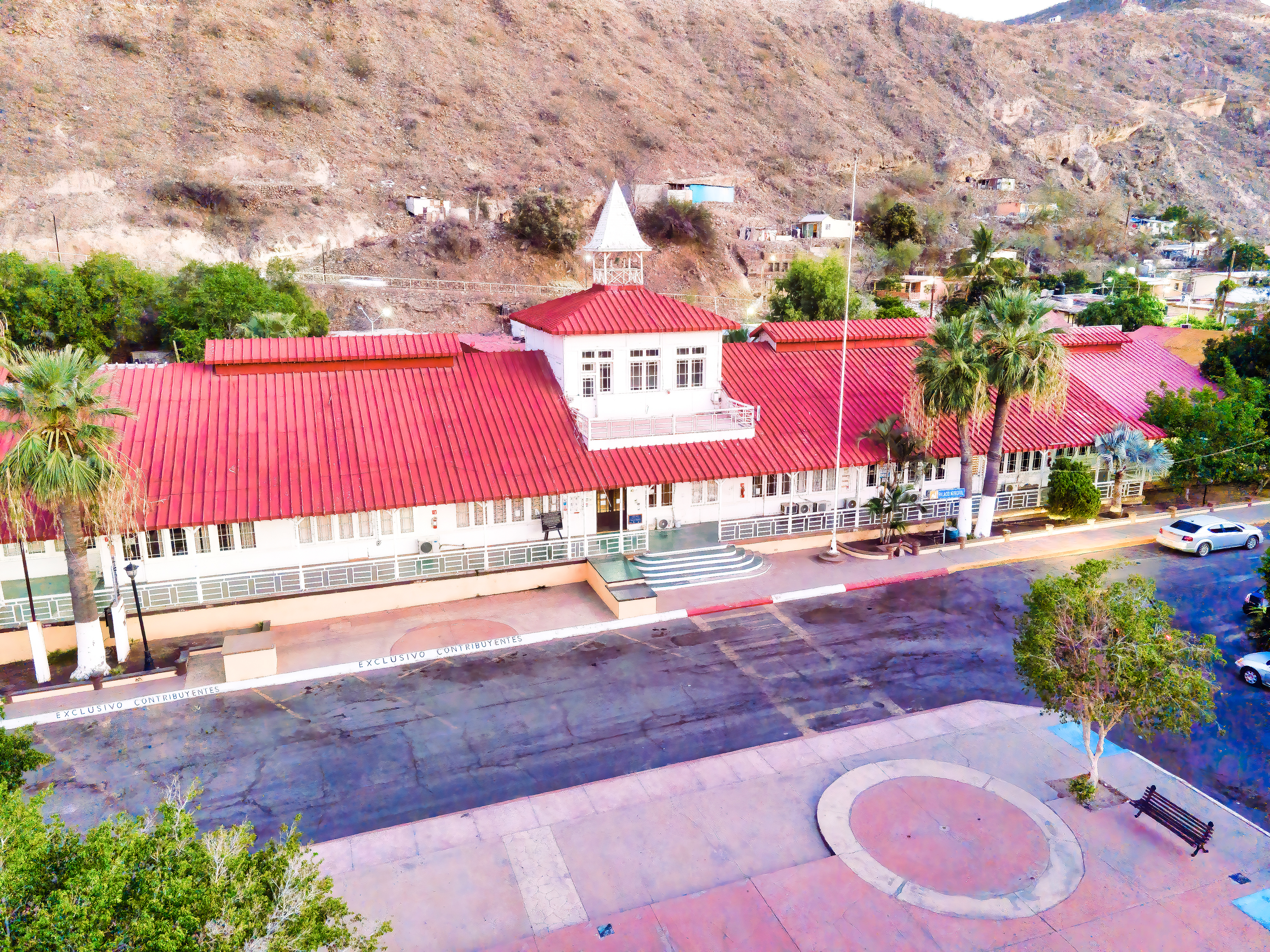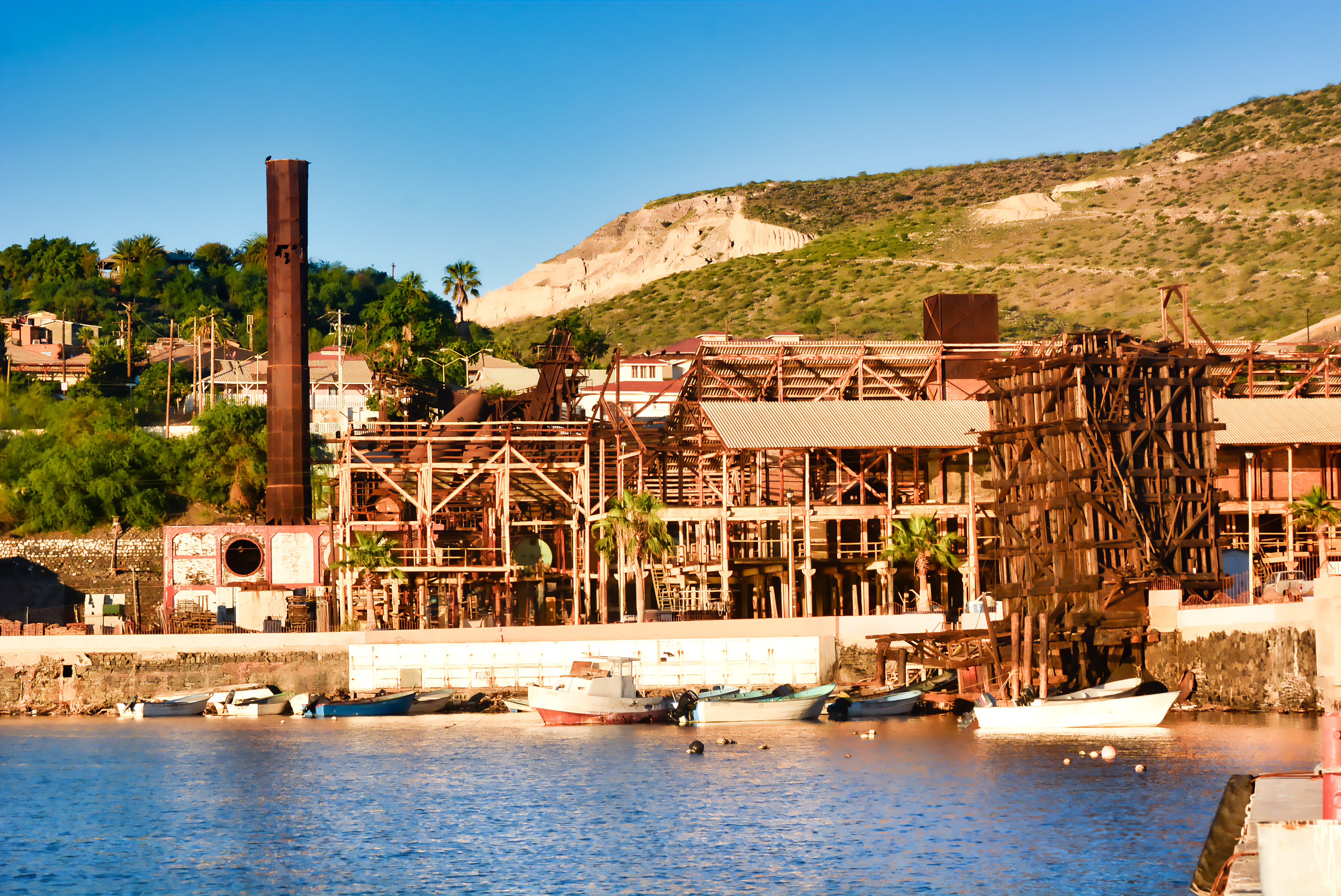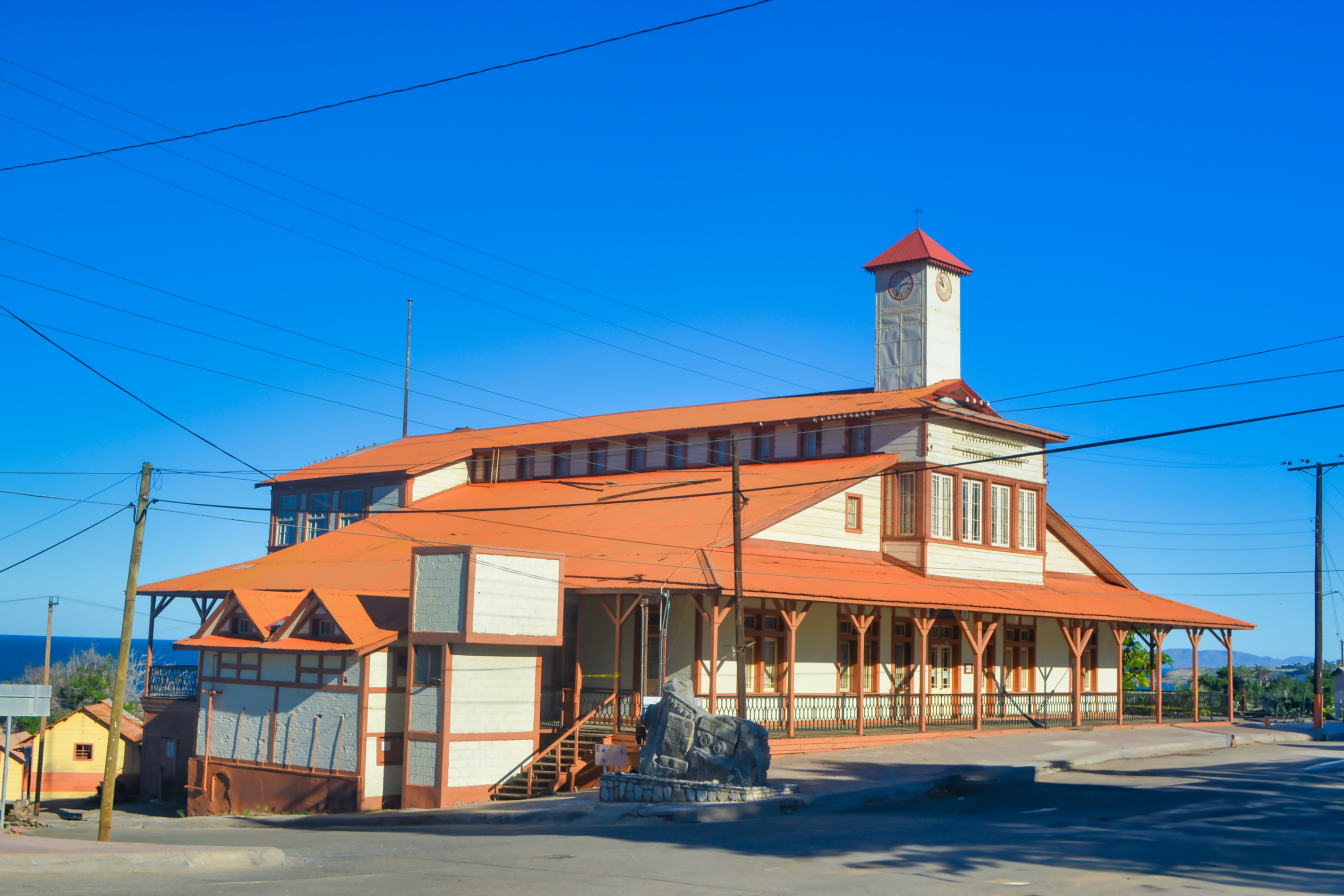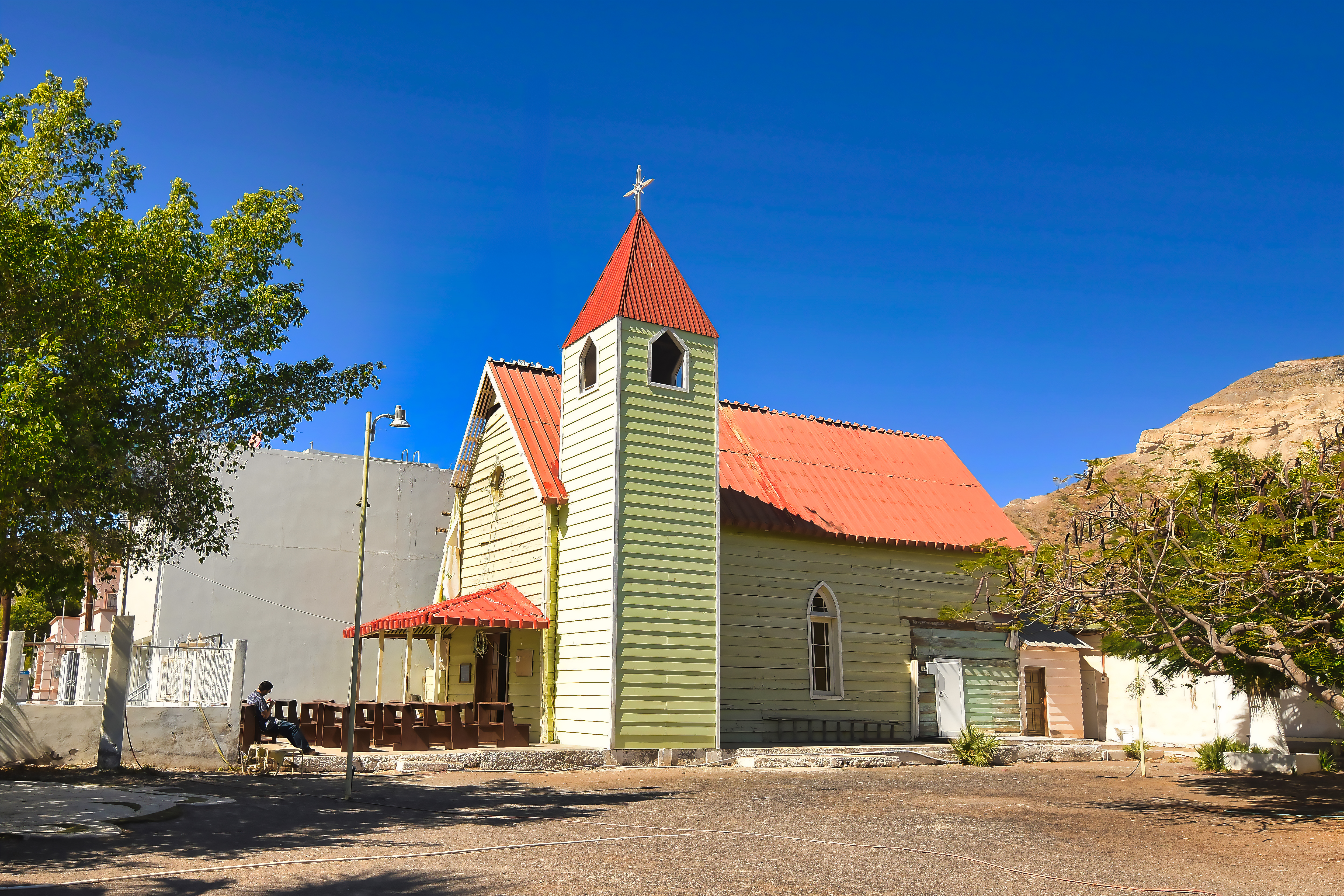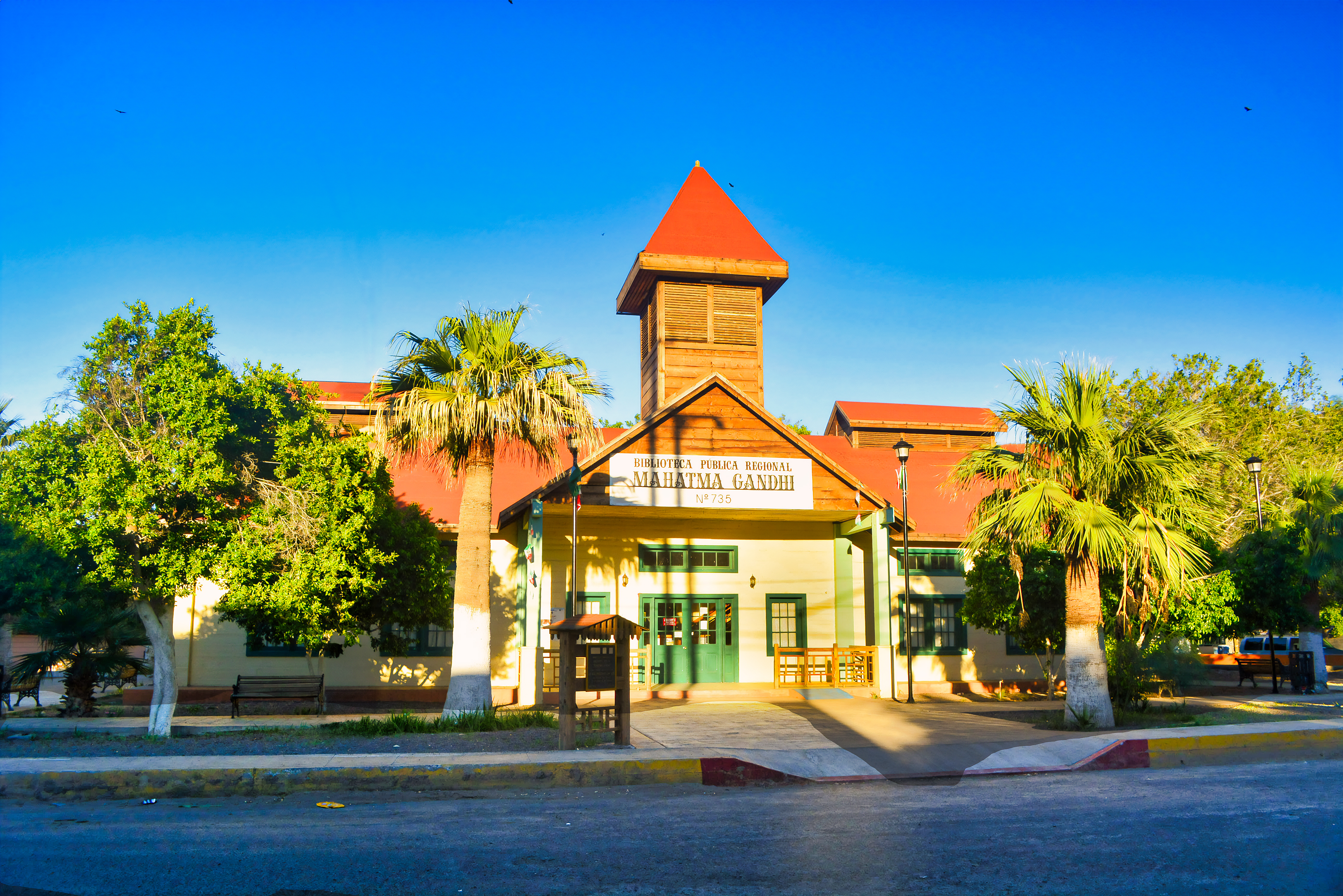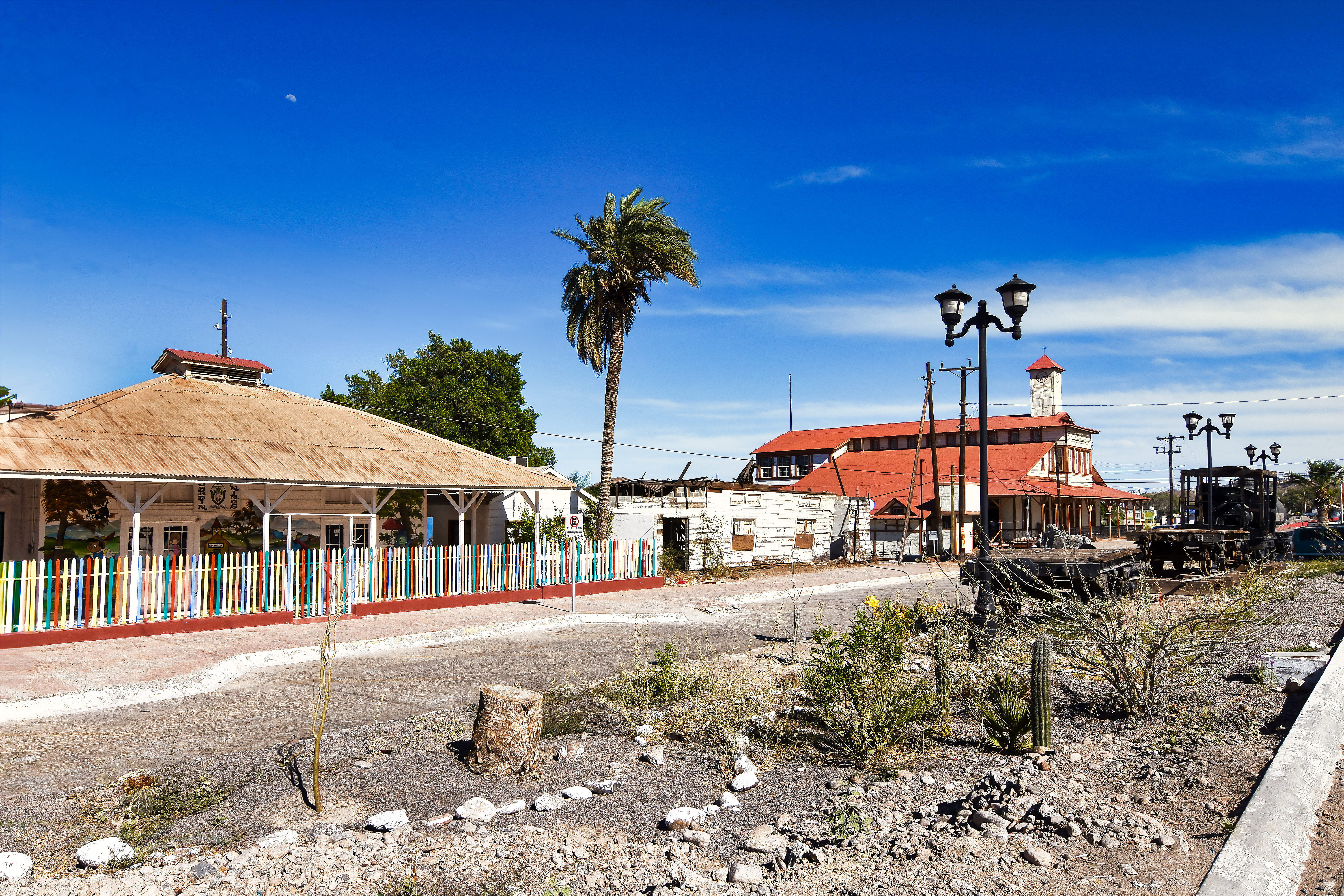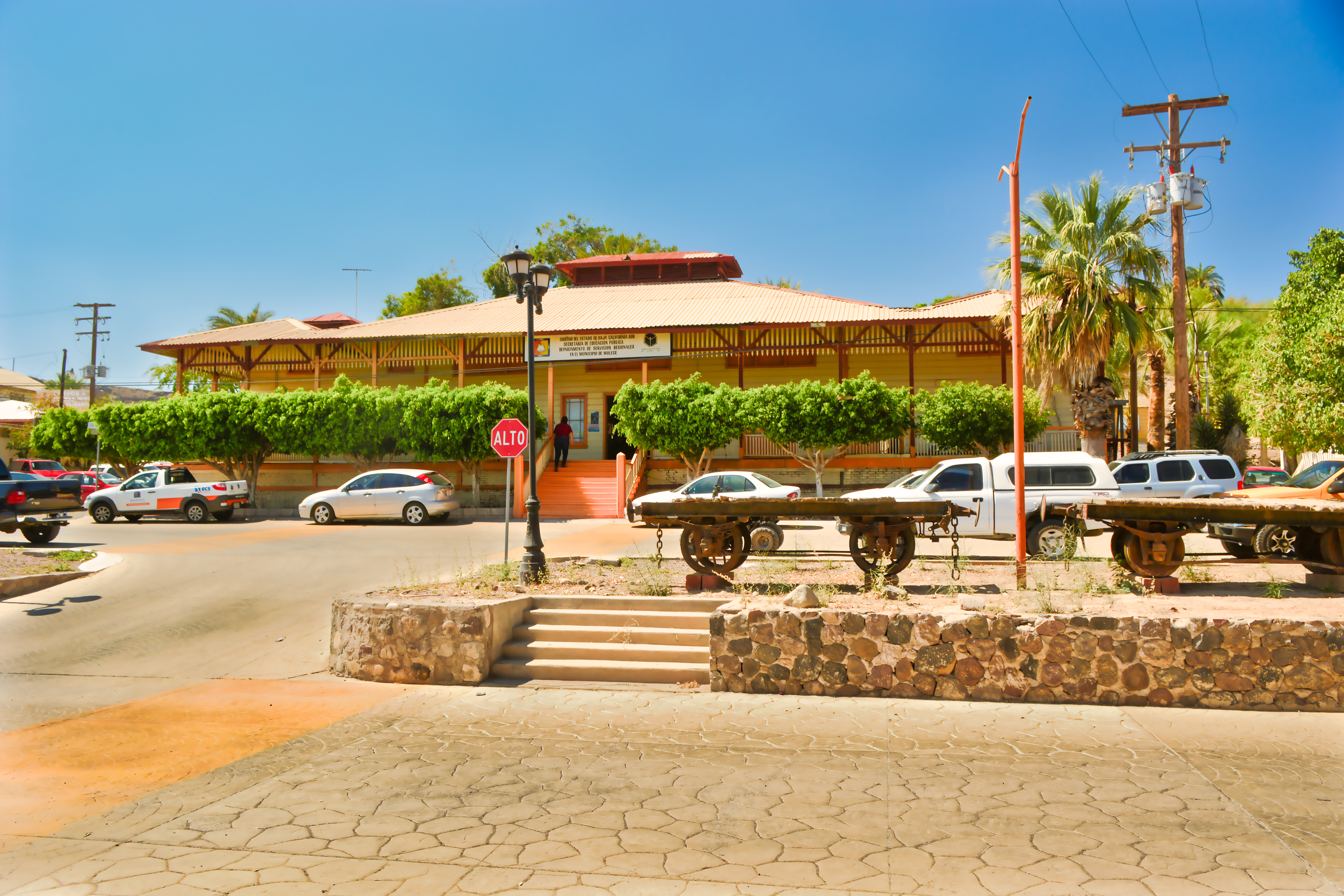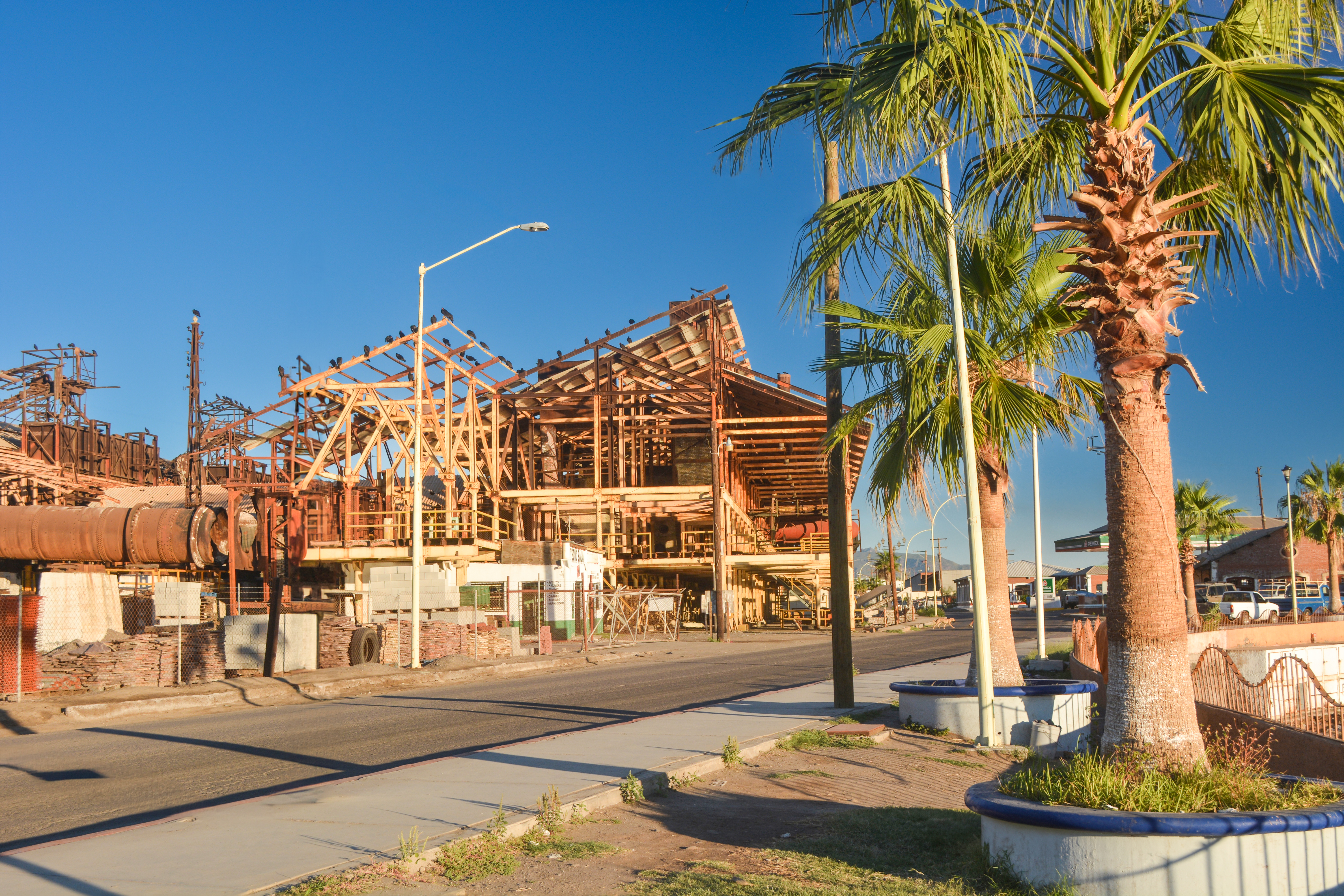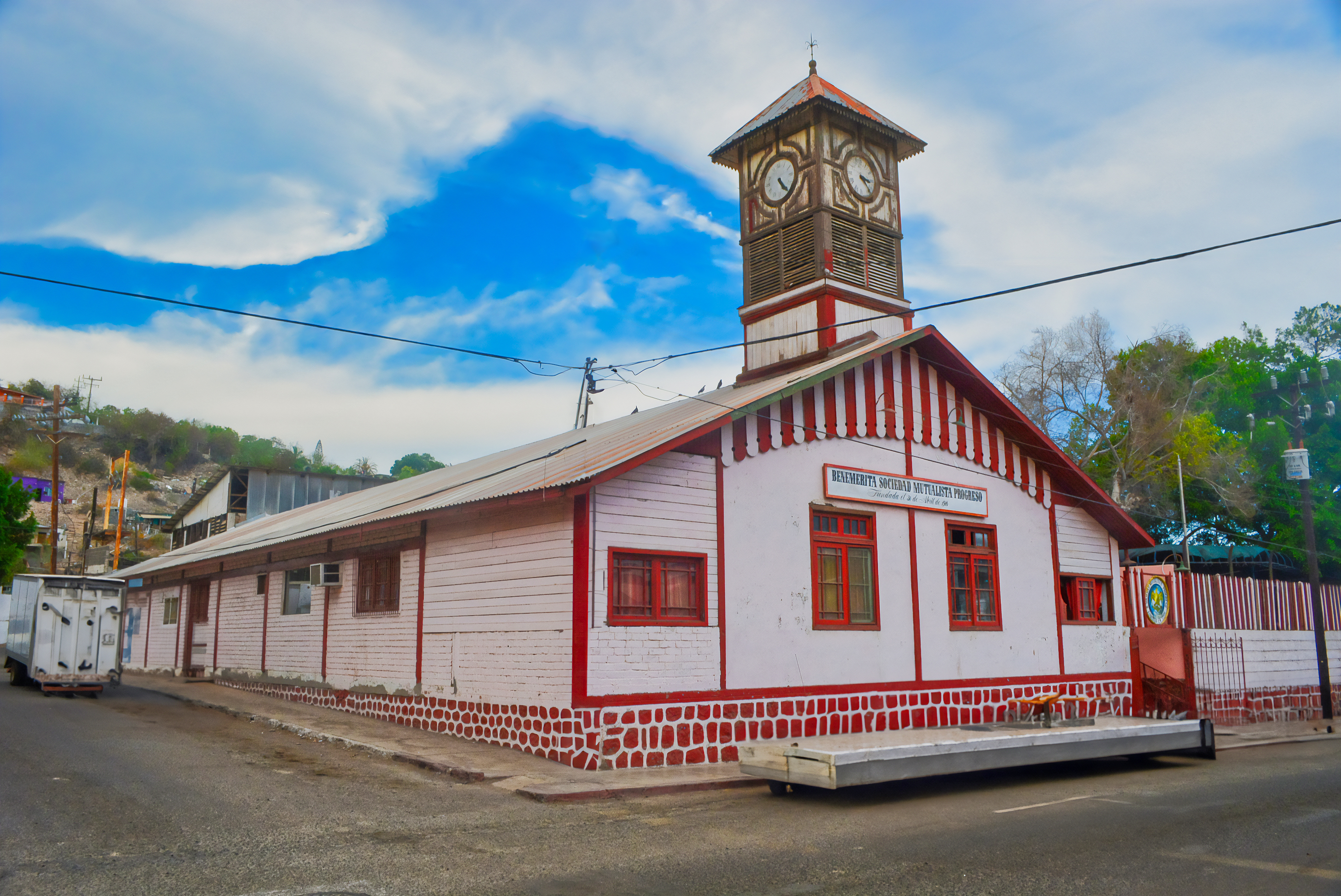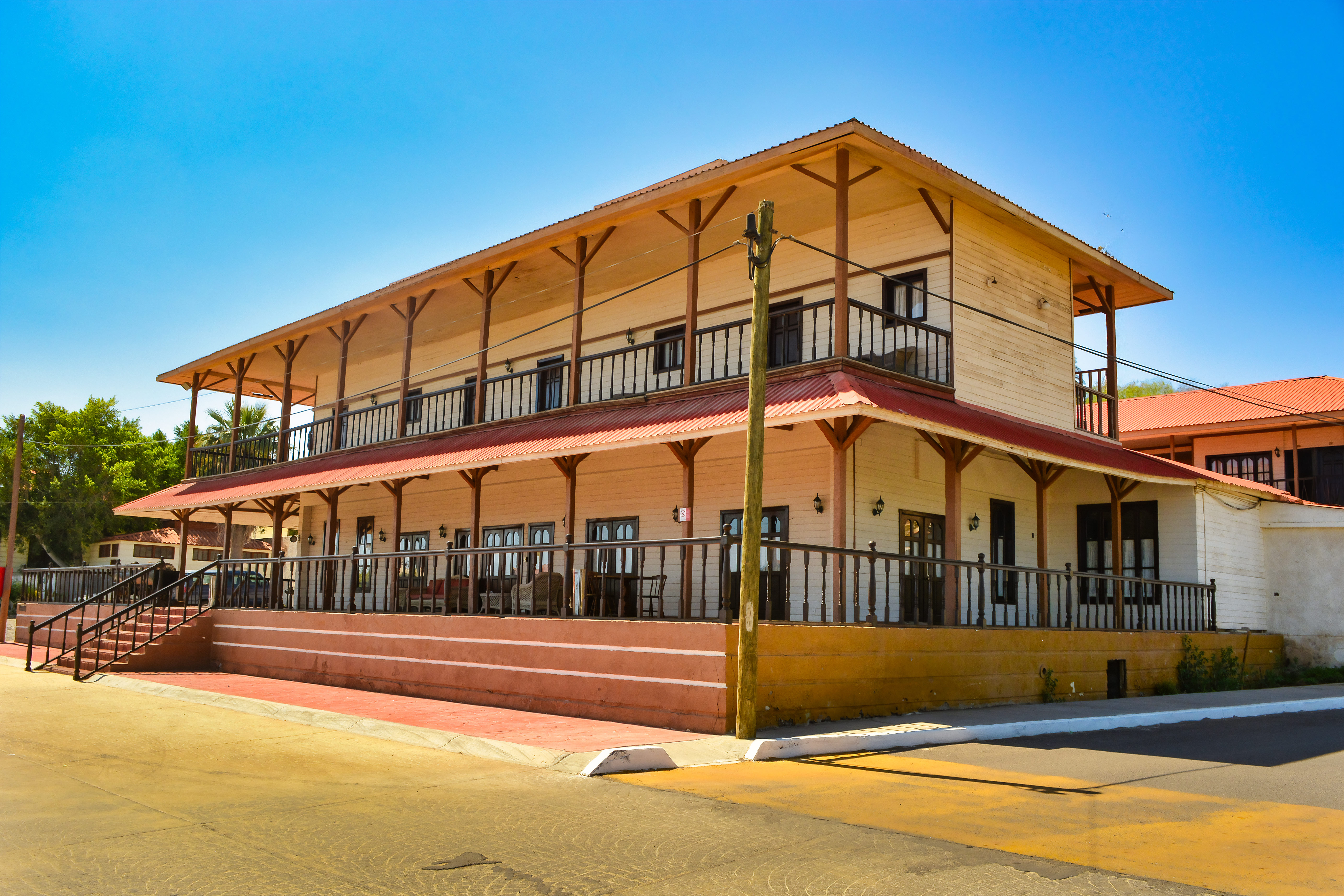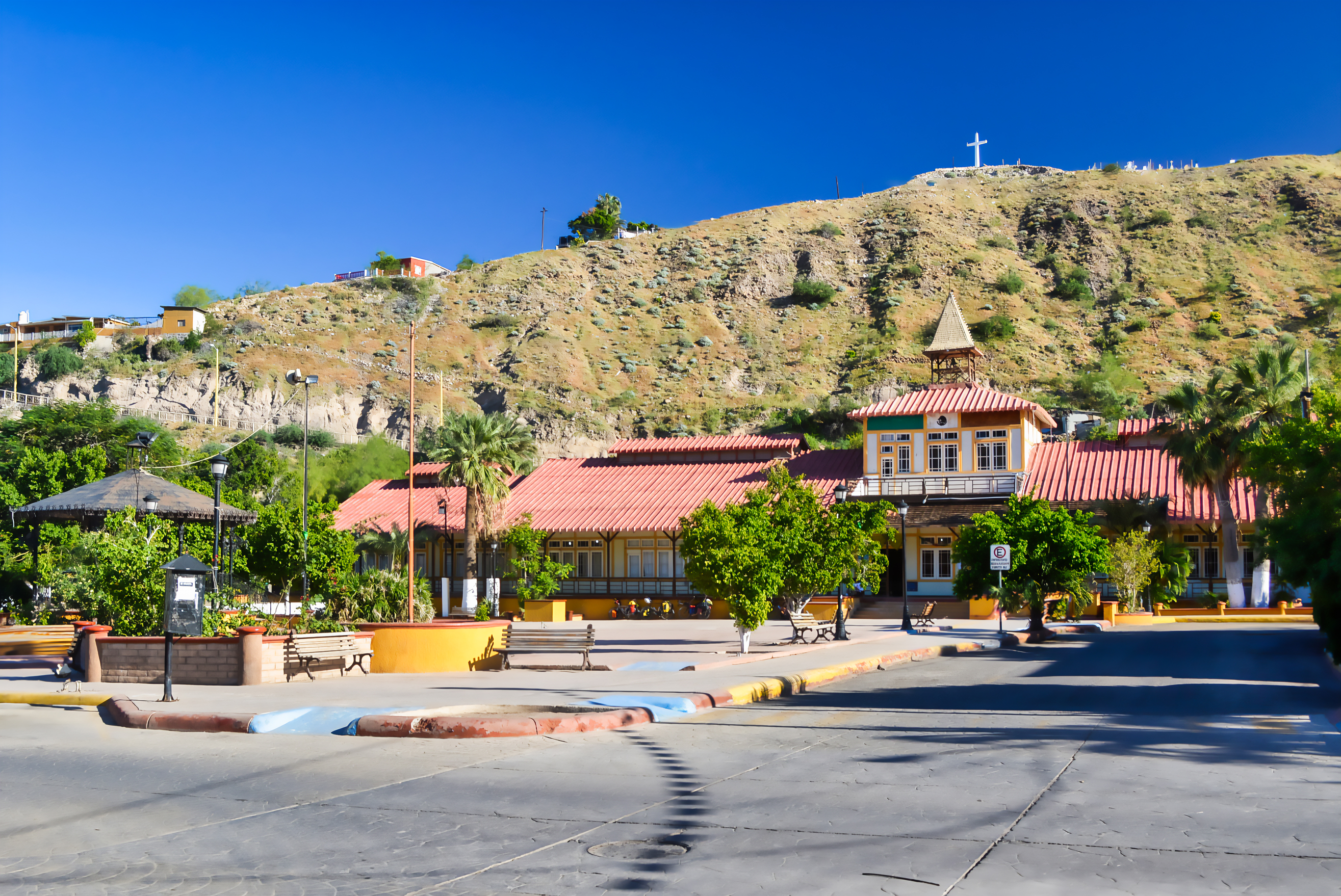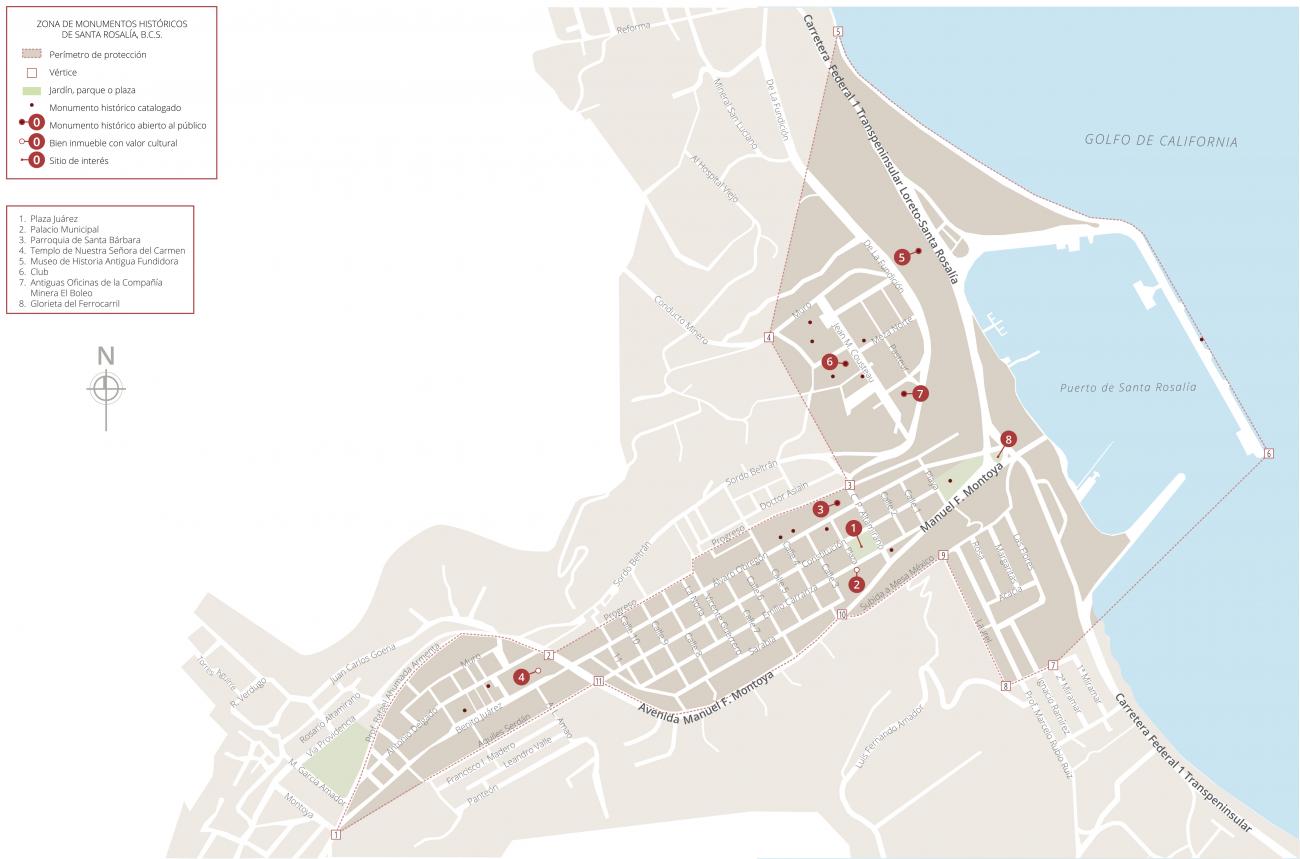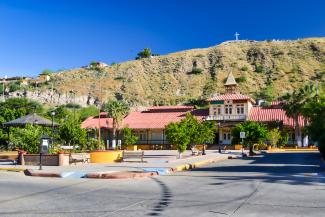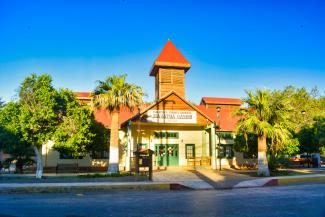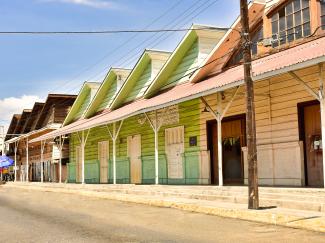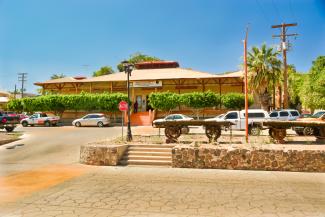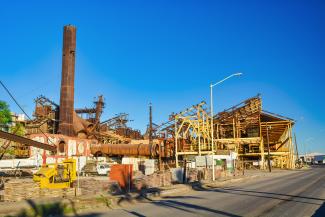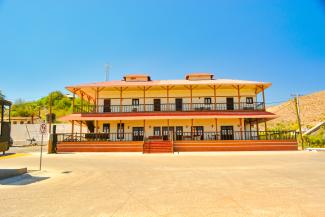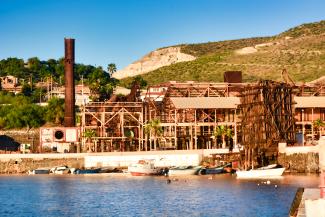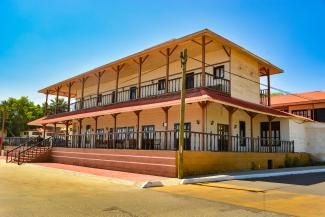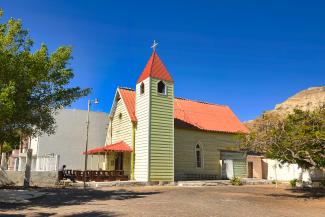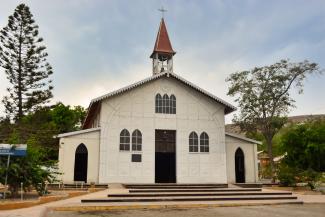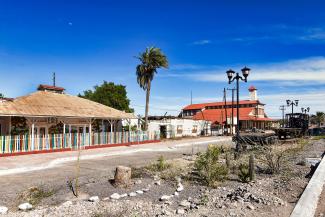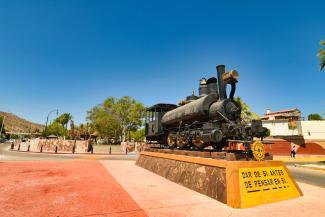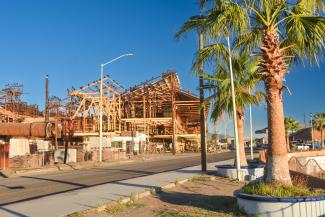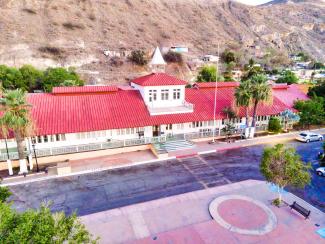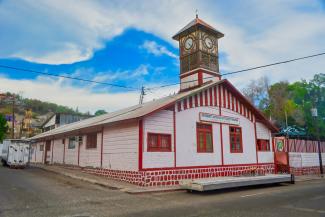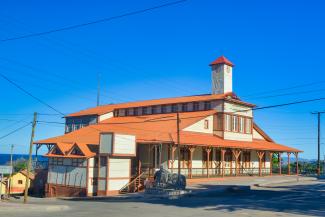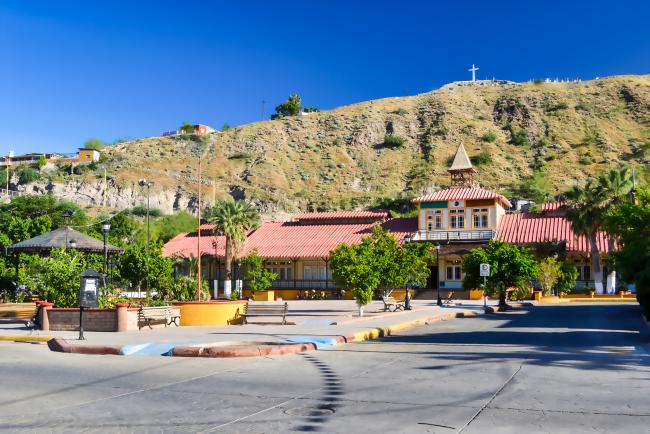This town offers a fabulous example of urban structure together with original buildings that emerged from the fusion of local and European elements, granting them a unique character.
Santa Rosalía
Santa Rosalía is located in the municipality of Mulegé, in Baja California Sur. It was founded in 1885 following the discovery of copper ore deposits, and the French company El Boleo took charge of establishing the infrastructure needed for its exploitation. For over 50 years, the company extracted copper here, until shutting down operations in 1954. Recently, mining has begun again under the name Minera y Metalúrgica del Boleo (belonging to the company Korea Resources).
The formal characteristics of the city’s buildings, the relation between urban spaces and structure are valuable testimony to the social, economic and political history of Mexico; for these reasons the town of Santa Rosalía, Baja California Sur, was declared a Zone of Historic Monuments on December 5, 1986.
This Zone of Historic Monuments comprises and area of 0.79 km2 in a single perimeter and is made up of 110 blocks with 31 buildings of historical value, all constructed in the 19th century. Some of these had religious purposes, such as the church of Santa Bárbara, the most important in the city, and among the buildings used for educational purposes is the Former School, which today houses the Town Hall.
Other notable constructions in Santa Rosalía are the facilities of the Compañía Minera El Boleo, the Hotel Francis, the Rotary Club, the Manuel Santiesteban Casa Club, the Former House of Distinguished Guests, the Mutual Society and the José María Morelos y Pavón School.
The remaining buildings are private residential properties, many of which display, as a result of the foreign influences on the town, characteristic materials and ornamental details that define a singular local style; these date from the Porfiriato period and into the early 20th century.
Coordinación Nacional de Monumentos Históricos
La Coordinación Nacional de Monumentos Históricos del Instituto Nacional de Antropología e Historia ...

